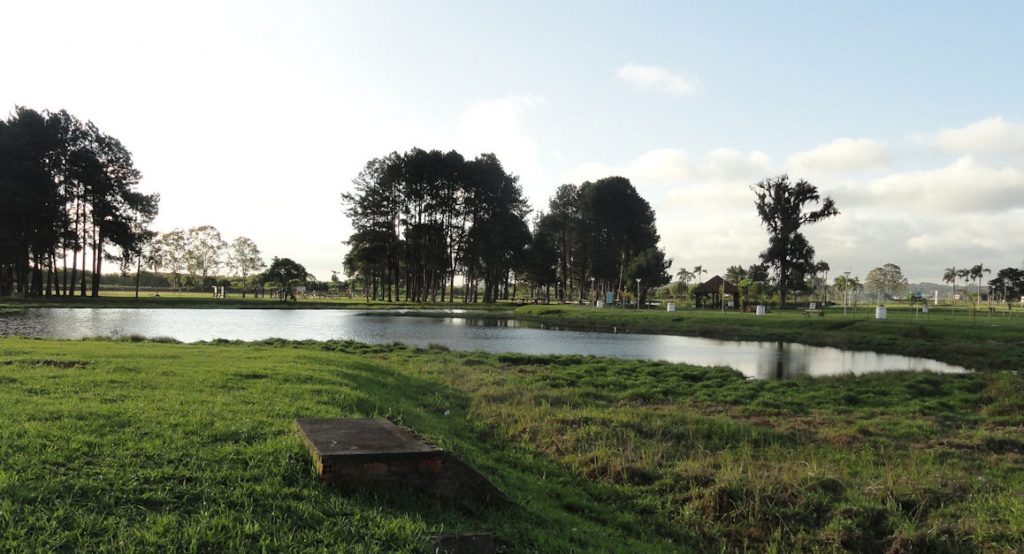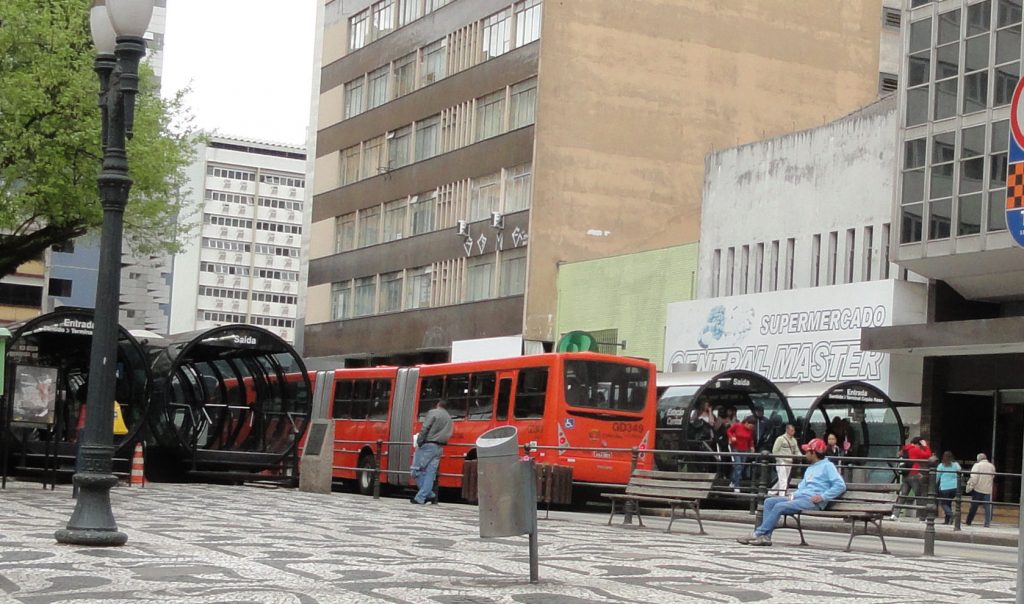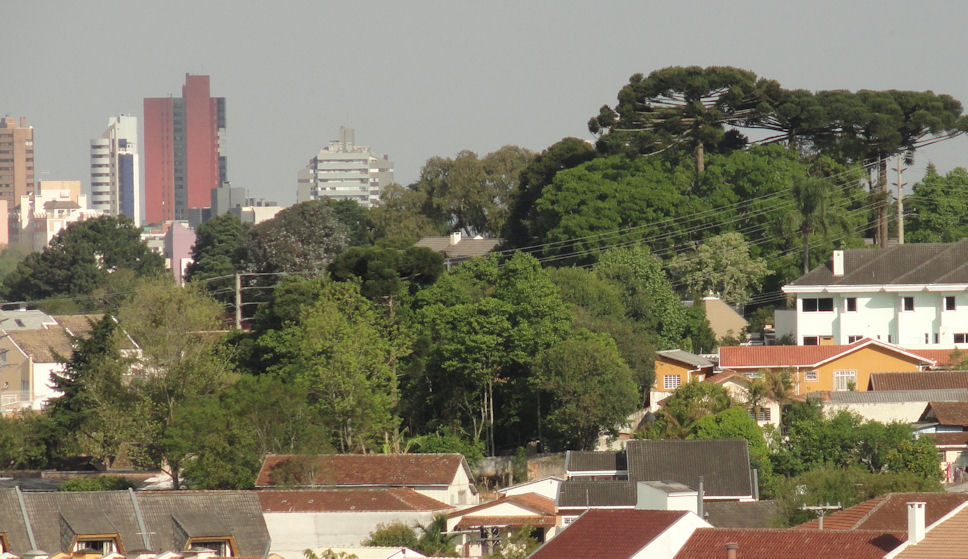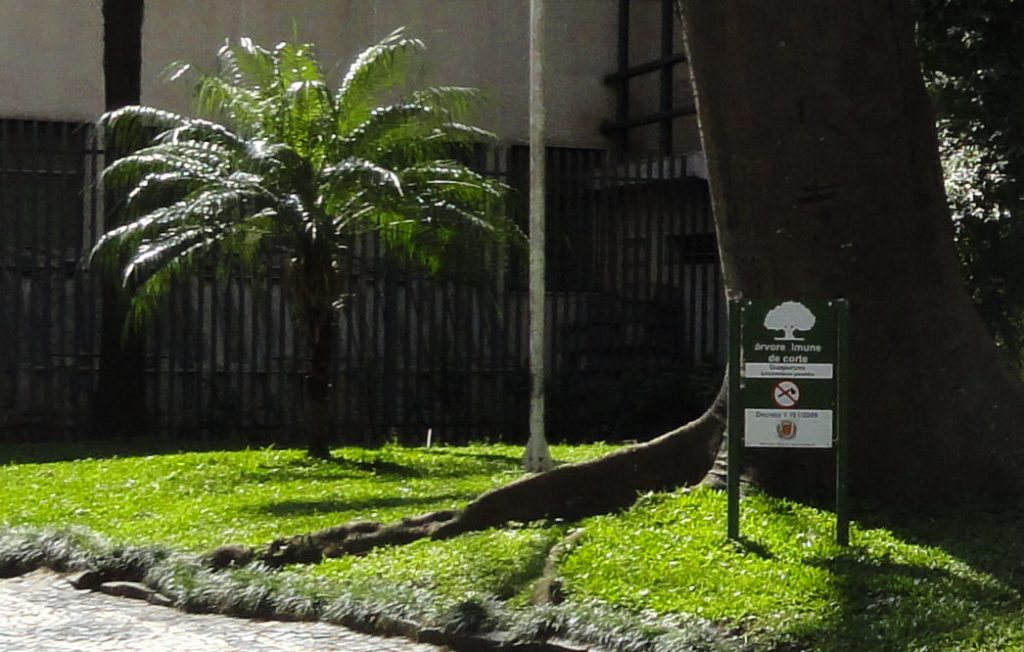
Curitiba, the capital of Paraná, is the best planned city in Brazil and one of the best in the world.
They have been following a master plan since the 1940s. The city has a wonderful mass transit system. You can see the mass transit buses on my pictures. They have a system where you only pay once and then you can ride on the various types of buses. You do not pay on the bus itself. Rather you do into one of those tubes in the picture. Curitiba buses are specially designed and built in a local Volvo factory. Several doors open at one time, greatly facilitating loading and unloading. It is more like a Metro system in that respect. They are going to get an actual Metro. The Federal government will finance part and it will run under an old highway, which now bypasses the city with a ring road. The Curitiba authorities want to convert that road into a long & narrow park, with bike trails, something like the W&OD. The road currently features dedicated bus lanes. The goal is NOT to encourage automobile traffic by keeping the road open to cars.

Nobody is exactly sure why city planning is so ingrained in Curitiba. The city was lucky to have a series of good mayors and the many people in the city support an d take seriously the need for a sustainable community, but that just postpones the question as to why those things.

No matter the reason, Curitiba is a city the mostly works. Traffic is tolerable. Buildings are attractive with a good mix of old and new. The city is clean and there is a lot of green space. The green space is more than just attractive and the ponds in every park are not just for decoration. The authorities in Curitiba long ago figured out the drainage patterns of their city. The parks are in the spots where water would naturally accumulate or can be easily made to accumulate after storms. It rains a lot in Curitiba. Most cities in Curitiba’s situation suffer significant flooding and mudslide. Curitiba does not. The rains drain into the parks and ponds. The ponds overflow, but it doesn’t matter because the temporarily rising water doesn’t hurt the grass and trees along the banks. The parks are like giant rain gardens. The picture up top shows one.

When they are not flooded, which is most of the time BTW, they provide ample recreational activities.
I wasn’t sure which city Curitiba reminded me of. The obvious choice would be Portland, but I don’t think so. It is a very European city in its architecture and general feel. Many of its inhabitants have roots in Central and Eastern Europe, so much of the city itself is has the feel of Northern Germany or Poland. But the park system, with its many ponds and water features made me think of Minneapolis. As I wrote many times, places really are their own places, but I still like to search for analogies.

I have to add a little bit of a disclaimer. We spoke to an environmentalist in Porto Alegre, one who knew about urban and regional planning. He said that Curitiba is indeed a great city, but that the greater skill is in marketing. According to what he told us, Porto Alegre also has the rain garden/park idea, but they are more out of sight. He also said that Curitiba has an easier time than most cities because it is mostly a middle class place. People are well behaved (something I alluded to above) and have the culture that supports sustainable cities. It has not had the big growth of poor populations who tend to ignore zoning rules.
Of course, we agreed that a big part of making a city a place where people want to live is marketing of the city’s favorable points. The rain garden/parks are indeed functional, but it is also very important for the quality of life that they be beautiful and accessible to the people. The parts in Curitiba help define the neighborhoods and are well used. Combining beauty and function is itself a value. And causality is usually complicated and there are feedback loops that empower or inhibit trends. A city that can market itself well may become a better city as a result of the marketing and the improvements it stimulates, which makes marketing easier …
Speaking of marketing, the bottom picture show a “tree immune to cutting”. Curitiba has designated some especially nice trees as protected and they have that sign. It is mostly marketing, but it calls attention to the beauty of the tree and the commitment to protect it. A less conspicuous marking could to the job but would fail on awareness.
My bottom line is that I like Curitiba. If I was a Brazilian I would certainly consider living there.
